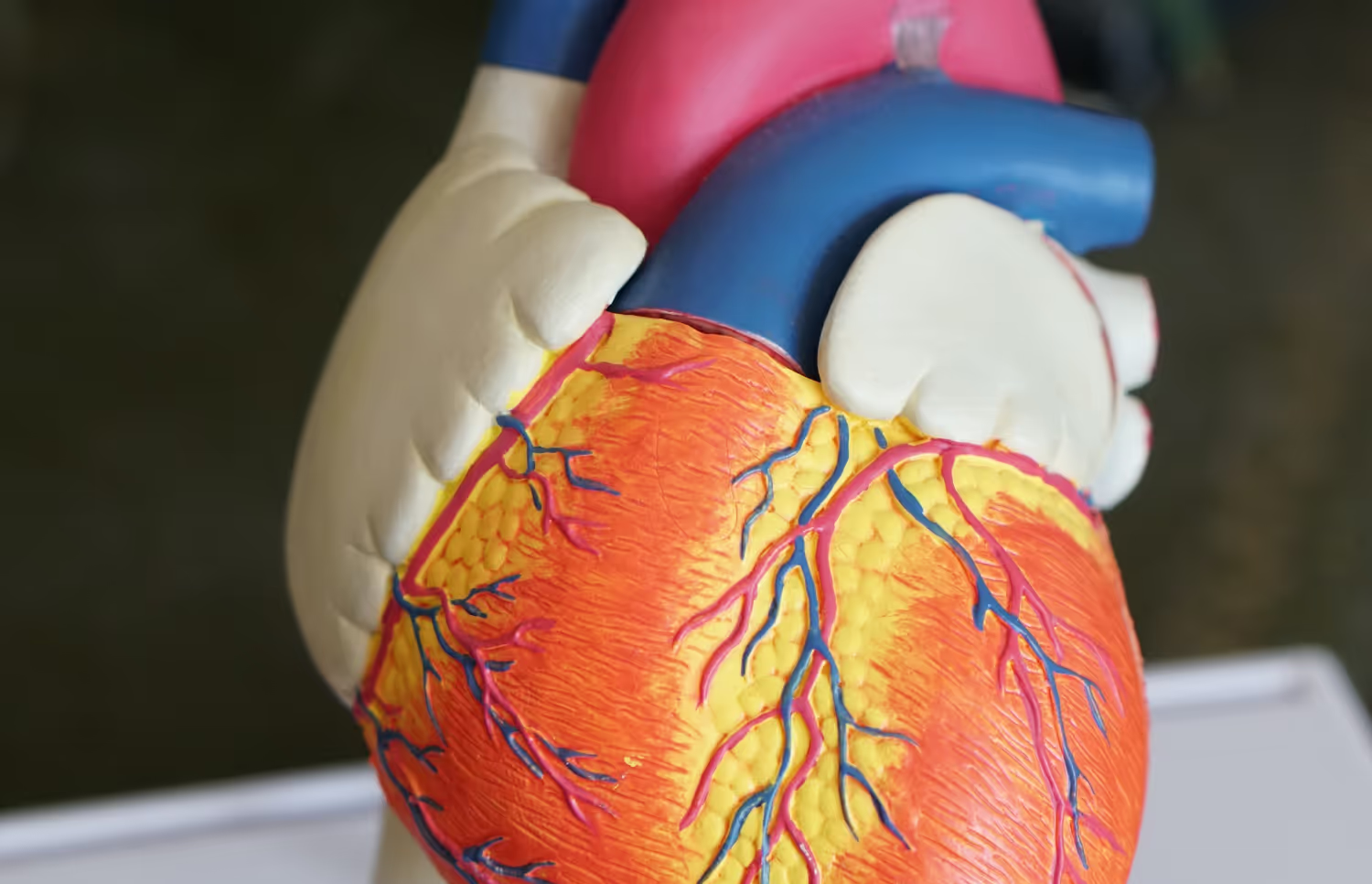
While you may not hear the term ectasia daily, its significance in health can't be overstated.
Ectasia is a term used to describe a dilation or distension of a tubular structure in the body that is not naturally supple. It could be a blood vessel, an airway, or even the eye's cornea. This medical phenomenon is like a balloon that inflates beyond its normal size, which could cause issues depending on its location and severity.
Understanding ectasia is crucial, as it can play a role in several health conditions. Even though ectasia itself is not a disease, its occurrence can significantly affect your well-being, making it a vital aspect of holistic health awareness.
Carda Health is here to break down this complex phenomenon, offering insight into the remarkable interconnectedness of our bodily systems and empowering you to better understand and care for your health.
What Are the Types of Ectasia?
Three primary types of ectasia are often discussed: keratoconus (corneal ectasia), pelvic ectasia, and thoracic aortic ectasia. Each affects a different part of the body, namely the eye's cornea, the pelvic veins, and the thoracic aorta, respectively.
Depending on the affected organ or body part, there are different types of ectasia, each with unique symptoms and treatment approaches.
Keratoconus
Keratoconus is a progressive eye disease that affects the cornea, the clear front surface of the eye. Over time, the cornea, typically round and dome-shaped, thins and begins to bulge into a cone-like shape.
This deformation distorts the light entering the eye on its way to the retina, causing distorted vision. It's a common form of corneal ectasia and often becomes apparent during a person's teens or early twenties. The exact cause of keratoconus is unknown, but it is believed to be a combination of genetic and environmental factors.
Pelvic Ectasia
Pelvic Ectasia, also known as pelvic venous incompetence or pelvic congestion syndrome, refers to the dilation of the veins in the pelvis. This condition is more common in women, often associated with pain and a feeling of heaviness in the lower abdomen.
Causes of pelvic ectasia can include hormonal changes, pregnancy, and certain medical conditions. Diagnosis is typically achieved through ultrasound, CT scan, or MRI, and treatment can involve medication, embolization procedures, or surgery.
Thoracic Aortic Ectasia
Lastly, thoracic aortic ectasia refers to the abnormal enlargement of the thoracic aorta, the large blood vessel that carries blood from the heart to the rest of the body. While not as severe as an aortic aneurysm, it's still a serious condition requiring monitoring.
Risk factors include age, high blood pressure, and genetic conditions. It's essential to keep in mind that this condition may not cause any noticeable symptoms until it's quite advanced, making regular check-ups critical.
What Causes Ectasia?
Unraveling the causes of ectasia is like piecing together a complex puzzle. Each type of ectasia, from keratoconus to thoracic aortic ectasia, has its own unique causes. However, certain common factors can influence the development of these conditions. These include genetic influences, age, and physical injuries or trauma.
Genetic Factors
Let's start with the role of our genes — the blueprint of our bodies. Our genetic makeup can significantly shape the landscape of our health, subtly steering us towards or away from certain health conditions, including various types of ectasia.
Research suggests that different forms of ectasia may go hand-in-hand with specific gene mutations or genetic conditions. Genetic conditions like Marfan syndrome or Ehlers-Danlos syndrome, for instance, may serve as potential gateways for thoracic aortic ectasia, predisposing an individual to this cardiac condition.
Age
As we journey through the chapters of life, our bodies adapt and change. Some of these changes may, however, increase the likelihood of developing ectasia.
The elasticity of our tissues, including those of our blood vessels and eyes, can decrease over time, similar to a slowly deflating balloon. These subtle changes can set the stage for conditions like thoracic aortic ectasia in the cardiovascular system or keratoconus in the eyes.
Injuries or Trauma
Physical injuries or trauma to certain body parts can potentially lead to ectasia. An unexpected event, like trauma to the eye, can contribute to corneal ectasia, while physical damage to blood vessels can sow the seeds for vascular ectasia.
Prompt attention to any injuries or traumas, followed by adequate rehabilitation, can help mitigate the damage, preventing the spread of these complications and fostering a return to health.
What Are the Symptoms of Ectasia?
The symptoms of ectasia can vary greatly, depending on the specific type and the organ or body part affected. Nevertheless, some common signs of ectasia include vision changes, pain or discomfort, and breathing difficulties.
Vision Changes
Keratoconus, a type of corneal ectasia, primarily affects the eyes. Symptoms include progressive changes in vision, such as blurring or distortion. Individuals may also experience increased light sensitivity and frequent changes in their eyeglass prescriptions.
Pain or Discomfort
Pain or discomfort is another possible symptom of ectasia. For example, individuals with pelvic ectasia often report chronic pelvic pain, feelings of pressure, and heaviness in the lower abdomen. Similarly, thoracic aortic ectasia can sometimes cause chest or back pain.
Breathing Difficulty
While not common, some forms of ectasia can lead to breathing difficulties. For instance, if thoracic aortic ectasia progresses and impacts other structures in the chest, it may affect breathing.
However, it's important to remember that many people with this form of ectasia only experience symptoms once the condition has advanced significantly. Regular check-ups are essential to detect any issues early on and manage them effectively.
How Is Ectasia Diagnosed?
Diagnosing ectasia involves a detailed medical evaluation and specific tests, depending on the type of ectasia suspected. A key part of diagnosis is understanding a patient's medical history, physical examination, and any symptoms they may be experiencing.
For keratoconus, a type of corneal ectasia, a comprehensive eye examination is typically performed. This includes corneal mapping, a technique that measures the curvature of the cornea and can detect irregularities associated with this condition.
In the case of pelvic ectasia, diagnosis is usually established through imaging studies like ultrasound, computed tomography (CT), or magnetic resonance imaging (MRI) scans. These technologies provide detailed images of the pelvic region and can detect abnormalities in the pelvic veins.
When thoracic aortic ectasia is suspected, a variety of imaging techniques may be used to visualize the aorta and surrounding structures. These can include chest X-rays, CT scans, MRIs, or echocardiograms.
How Is Ectasia Treated?
The treatment approach for ectasia is as diverse as its forms. The primary goal is to manage symptoms, prevent the condition from progressing, and improve the patient's quality of life.
For keratoconus, early stages can be managed with prescription eyewear or contact lenses to correct vision distortion. More advanced cases may require surgical intervention, such as corneal cross-linking or corneal transplant.
For pelvic ectasia, treatments range from lifestyle modifications and pain management strategies to hormonal therapies. In some cases, a minimally invasive procedure called venous embolization may be recommended.
For thoracic aortic ectasia, treatment typically focuses on slowing the expansion of the aorta and preventing complications. This can involve medication to control blood pressure, regular monitoring, and in certain cases, surgery to repair the aorta.
With our comprehensive programs at Carda Health, individuals can go beyond conventional approaches. Carda Health offers specialized cardiac rehab programs, including virtual options, to provide tailored interventions that address the specific needs of patients with ectasia.
These programs encompass a holistic approach to treatment, combining exercise guidance, dietary planning, and mental well-being support to encourage overall cardiovascular health and support the quality of life of individuals with ectasia-related conditions.
Can You Prevent Ectasia?
Preventing ectasia can be complex due to its multifaceted nature, with various types and causes requiring tailored approaches. While a one-size-fits-all prevention strategy may not exist, there are steps you can take to reduce your risk or delay the onset of certain forms of ectasia.
For individuals with a family history of conditions like Marfan syndrome, which is associated with thoracic aortic ectasia, seeking genetic counseling can provide valuable insights and guidance. Additionally, regular screenings play a crucial role in early detection and intervention, allowing for timely management.
When it comes to preventing keratoconus, protecting your eyes from excessive rubbing and sun exposure is essential. Furthermore, maintaining a healthy lifestyle, which includes practicing balanced nutrition, engaging in regular exercise, and monitoring blood pressure levels, can support overall vascular health and potentially mitigate the risk of ectasia.
While we may not be able to prevent all forms of ectasia, we can be proactive about our health. Regular medical check-ups, understanding your family medical history, staying active, and incorporating Carda Health programs into your preventive efforts can all support your well-being.

The Bottom Line
Ectasia is a significant medical phenomenon that involves the dilation or distension of tubular structures in the body. While it is not a disease itself, ectasia can greatly impact an individual's well-being depending on its location and severity. Understanding the different forms of ectasia is crucial for holistic health awareness, as it plays a role in several health conditions.
By better understanding its causes, recognizing the symptoms, undergoing appropriate diagnostic tests, and considering programs at Carda Health that can provide solutions for a wide range of heart health needs, individuals can seek timely treatment and take proactive steps toward their overall well-being.
Sources:
What is coronary artery ectasia? | BHF

.avif)






